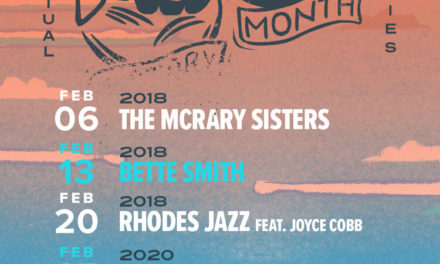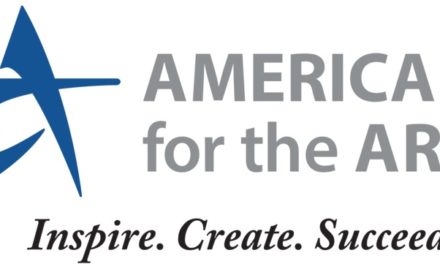Congratulations to our colleague Carol Coletta upon the launch of the new program which she leads, ArtPlace:
From New York Times:
In the two years since he became chairman of the National Endowment for the Arts, Rocco Landesman has been trying to make the case that art is an effective linchpin to economic development. Now in a broad effort to build on that thesis, he has helped to enlist an unusual consortium of foundations, corporations and federal agencies that will use cultural enterprises to anchor and enliven 34 projects around the country, from a struggling city block in Detroit to a vacant school in East Harlem.
The projects will receive $11.5 million in grants from the foundations and another $12 million in loans from the corporations under the program that is to be financed through the private sector but coordinated in part by federal agencies. The program, to be announced on Thursday and called ArtPlace, aims to integrate artists and arts groups into local efforts in transportation, housing, community development and job creation as an important tool of economic recovery.
“We really need to scale up the resources in the field,” Mr. Landesman said. “It is not going to be through Congressional appropriation.”
“We felt,” he added, “if we worked together and coordinated our efforts, it would have a multiplier effect.”
So in St. Paul the program will help underwrite efforts to stage more than 100 arts projects along a new light-rail line. In Detroit a stretch of Woodward Avenue will gain a music center, pedestrian greenways, improved museum space and a new building for start-up companies. And P.S. 109 in East Harlem will become a home for 90 artists and their families as well as 13,000 square feet of space for community and cultural groups.
Mr. Landesman helped to hatch the program just over a year ago with Luis A. Ubiñas, the president of the Ford Foundation, who is serving as the chairman of the ArtPlace Presidents Council.
“We need to communicate that the arts are as important as ever, that they can’t be left behind, that they can’t be dropped to the cutting-room floor,” Mr. Ubiñas said. “Too many people think of the arts as luxuries, as jewels, things that may not be necessary in times of need, things that can be put off. The arts are inherently valuable, and they’re also part of what’s going to get us out of this economic problem we’re in.”
The projects were selected by an independent review board after a request for proposals.
In Seattle, for example, a grant will help finance activities at the Wing Luke Museum of the Asian Pacific American Experience as part of a larger effort to help the Chinatown-International District.
“We’re in an urban, ethnic neighborhood, with a high crime rate,” said Beth Takekawa, the executive director of the museum, which was founded two years ago. “It’s hard for all the businesses down here. We kind of live and die together.”
In San Francisco the real estate developer Forest City — together with Intersection for the Arts, an alternative nonprofit art space — is redeveloping four downtown acres in the Yerba Buena, Tenderloin and Market districts, converting properties like the old San Francisco Chronicle building, parking lots and vacant warehouses into film and digital-media businesses, artists’ workshops and cultural event spaces.
“Art is a critical component of what makes cities thrive,” said Alexa Arena, the Forest City executive overseeing the effort. “This is about looking at the life of the project rather than just the physicality of it.”
The foundations involved are the Ford Foundation, the Andrew W. Mellon Foundation, the Rockefeller Foundation, Bloomberg Philanthropies, the James Irvine Foundation, The John S. and James L. Knight Foundation, the Kresge Foundation, the McKnight Foundation, the Rasmuson Foundation and the Robina Foundation as well as an anonymous donor.
It is unusual for foundations to join forces in this way to back a single cause. “It seemed too important not to do,” said Don Michael Randel, president of the Mellon Foundation. “The support for the arts and humanities is fairly frail.”
The federal partners besides the National Endowment are the departments of Housing and Urban Development, Health and Human Services, Agriculture, Education, and Transportation, along with the White House’s Office of Management and Budget and its Domestic Policy Council.
While they do not provide financing, the federal agencies participate in the ArtPlace Presidents Council and its operating committee meetings.
The $12 million loan fund is being supplied by Bank of America, Citibank, Deutsche Bank, Chase, MetLife and Morgan Stanley. The amount of the average grant is about $350,000.
Funds for the program are overseen by the Nonprofit Finance Fund, a nonprofit lender and financial consulting organization. A second financing cycle starts on Thursday, with submissions invited through Nov. 15 on the program’s Web site.
ArtPlace likens its role to providing venture capital, seeding projects that already enjoy strong local support and connecting with an area’s development strategy to attract more private and public dollars. The endowment calls this approach “creative placemaking,” and has been promoting it for 20 years.
“We’re doubling down on the investments a city has already made,” said Carol Coletta, the president of ArtPlace.




